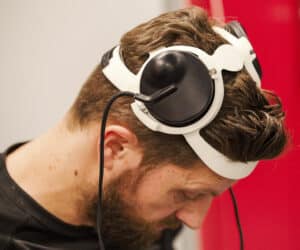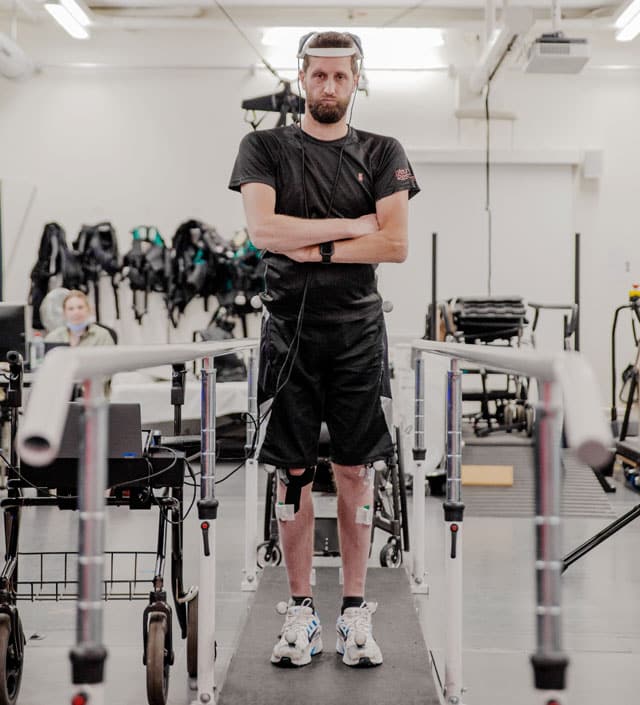Gert-Jan Oskam was living in China in 2011 when he was in a motorcycle accident that left him paralyzed from the hips down. Now, with a combination of devices, scientists have given him control over his lower body again.
“For 12 years I’ve been trying to get back my feet,” Oskam said in a press briefing Tuesday. “Now I have learned how to walk normal, natural.”
In a study published in May in the journal Nature, researchers in Switzerland described implants that provided a “digital bridge” between Oskam’s brain and his spinal cord, bypassing injured sections. The discovery allowed Oskam, 40, to stand, walk and ascend a steep ramp with only the assistance of a walker. More than a year after the implant was inserted, he has retained these abilities and has actually showed signs of neurological recovery, walking with crutches even when the implant was switched off.
“We’ve captured the thoughts of Gert-Jan and translated these thoughts into a stimulation of the spinal cord to reestablish voluntary movement,” Grégoire Courtine, a spinal cord specialist at the Swiss Federal Institute of Technology, Lausanne, who helped lead the research, said at the press briefing.
In 2018, a different group of scientists, also led by Courtine, devised a way to stimulate the brain with electrical-pulse generators, allowing partially paralyzed people to walk and ride bicycles again. Last year, more advanced brain stimulation procedures allowed paralyzed subjects to swim, walk and cycle within a single day of treatment.

Oskam had undergone stimulation procedures in previous years and had even regained some ability to walk, but eventually, his improvement plateaued. At the press briefing, Oskam said that these stimulation technologies had left him feeling that there was something foreign about the locomotion, an alien distance between his mind and body.
The new interface changed this, he said: “The stimulation before was controlling me, and now I’m controlling the stimulation.”
In the new study, the brain-spine interface, as the researchers called it, took advantage of an artificial intelligence thought decoder to read Oskam’s intentions — detectable as electrical signals in his brain — and match them to muscle movements. The etiology of natural movement, from thought to intention to action, was preserved. The only addition, as Courtine described it, was the digital bridge spanning the injured parts of the spine.
c.2023 The New York Times Company. This article originally appeared in The New York Times.







